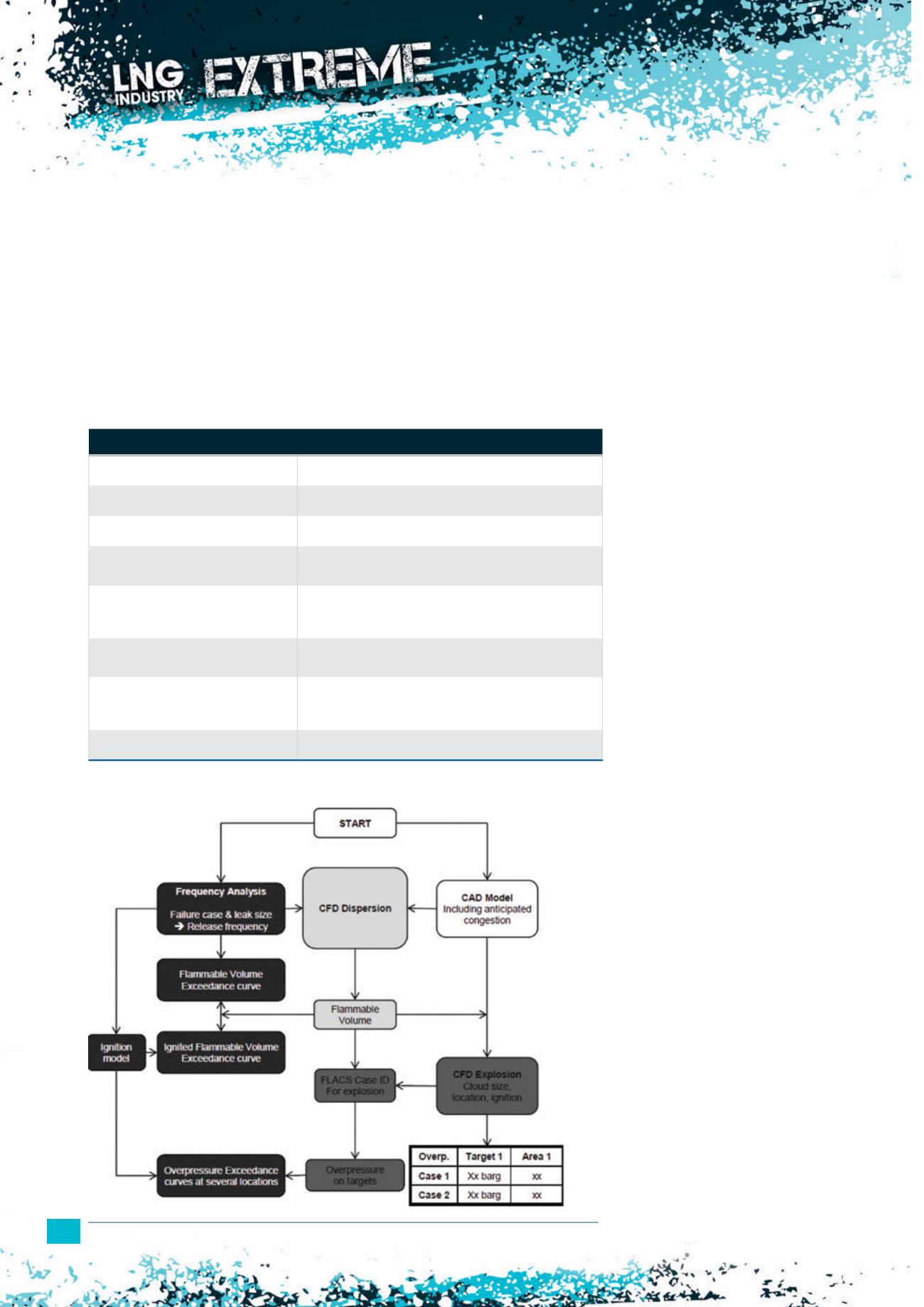
50
provides a basis for the thermal radiation criteria. However, some
experts disagree with this, because the effects come from flame
emissive power, as well as thermal radiation (Table 4).
Please refer to the ‘Fire protection paint or blast wall’
section of this article for details of the design criteria of the
structure.
Maximum overpressure protection
Maximum overpressure will dictate the strength of the
accommodation face in case of a blast to the topside by a third
party. Several overpressure cases are evaluated and 420 mbar
(10 times that of the initial signal) can be accepted without
having a detrimental effect to the accommodation structure.
If fire and explosion risk analysis (FERA) results are beyond
the aforementioned criteria, then a blast wall should be erected
between the accommodation and the topside.
A level of peak overpressure that may cause harm to people
in case of an explosion is set at 350mbarg.
Fire protection paint or blast wall
The accommodation facing the topside, the tank dome and the
pipe rack are all covered by paint for fire protection (PFP).
The paint is selected based on FERA. The general criteria are
as follows:
A0, A30, A60: for cellulosic fire with a maximum temperature
of 950°C.
H0, H30, H60, H120: for
hydrocarbon fire with a maximum
temperature of 1150°C.
J60, J120: for jet fire based on
OTI 634 95.
As a result, J60was applied to the
FLNG project, but, in some areas, a lower
standard paint can be used.
Breathable atmosphere
Normally, human breathable reactions
are as follows:
21 – 18%O
2
: no discernible
symptoms.
18 – 11%O
2
: reduction of physical
and intellectual performance without
prior warning. Increased pulse
and breathing rate with disturbed
muscular coordination. Attention and
thinking requires more effort.
14 – 10%O
2
: faulty judgement, rapid
fatigue and insensitivity to pain.
10 – 6%O
2
: nausea and vomiting,
collapse and permanent brain
damage. Possibility of fainting within
a fewminutes without prior warning.
Less that 6%O
2
: fainting almost
immediate. Convulsion, breathing
stops and possible death.
FERA and SGDA
FERA and smoke and gas dispersion
analysis (SGDA) are the fundamentals
of passive fire protection, fire fighting
systems (FFS), blast walls, cryogenic
effects, etc.
It is assumed that emergency
shutdown (ESD) valves will be in
action in case of fire and the topside
will be isolated by several blocks. It is
important to apply some data from
industry experience as the input
Table 4.
Observed effects at different levels of thermal radiation flux
Thermal radiation flux (kW/m
2
)
Observed effect
37.5
Sufficient to cause damage to process equipment
35
Immediate fatal injury to personnel
25
The minimum energy required to ignite wood at
indefinitely long exposure (non-piloted)
12.5
The minimum energy required for piloted ignition of wood
and melting of plastic tubing (this value is typically used as
a fatality number)
9.5
Sufficient to cause pain in 8 sec. and second degree burns
in 20 sec.
4.0
Sufficient to cause pain to personnel if unable to reach
cover within 20 sec. However, blistering of skin (second
degree burns) is likely. 0% lethality
1.6
Will cause no discomfort for long exposure
Figure 1.
Fire and explosion risk analysis (FERA).


